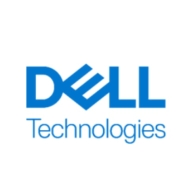


Both Dell Unity XT and Dell PowerMax NVMe are highly regarded storage solutions. Dell PowerMax NVMe seems to have the upper hand due to its superior features and long-term value despite higher pricing.
Features: Dell Unity XT users appreciate its efficient data reduction capabilities, ease of use, and favorable pricing. Dell PowerMax NVMe users value its superior speed, reliability thanks to its NVMe architecture, and advanced performance features that give it an edge.
Room for Improvement: Dell Unity XT could benefit from improved scalability, better performance during peak usage, and greater compatibility with other systems. Dell PowerMax NVMe users desire enhancements in interoperability with other systems, simplified management themes, and a more intuitive user interface.
Ease of Deployment and Customer Service: Dell Unity XT is praised for smooth deployment and responsive customer service. Dell PowerMax NVMe, while receiving positive feedback on support, is noted to have a steeper learning curve and more complex initial setup.
Pricing and ROI: Dell Unity XT is considered more cost-effective with quicker ROI, making it ideal for budget-conscious buyers. Dell PowerMax NVMe, although more expensive, is viewed as a worthwhile investment due to its high performance and advanced technology, offering higher long-term value.



Pure Storage FlashArray//X is the world’s first enterprise-class, all-NVMe flash storage array. It represents a new class of storage – shared accelerated storage, which is a term coined by Gartner – that delivers major breakthroughs in performance, simplicity, and consolidation.
Dell PowerMax is the industry’s most secure mission-critical storage platform. With NVMe Dynamic Fabric technology, PowerMax breaks from traditional storage limitations, enabling seamless integration with cloud-native and legacy applications. Designed with a powerful scale-up and scale-out architecture, PowerMax supports mission-critical applications at scale with zero downtime and ultra-low latency. The latest PowerMaxOS 10 release harnesses AI-driven efficiencies for trusted performance, capacity, and security. By choosing PowerMax, you can trust in a secure, intelligent, and always modern storage solution that unlocks the full potential of your data to drive business success.
Dell EMC Unity XT is one of the best all-flash storage arrays on the market today. Dell EMC Unity XT arrays are designed for performance, optimized for efficiency, and built for a multi-cloud world. In addition, they support digital transformation, enabling businesses to reach the full potential of their data capital quickly and easily. Dell EMC Unity’s All-Flash and Hybrid Flash storage platforms provide the performance, efficiency, enterprise-class software, and virtualization integrations required for running a wide range of virtualized applications.
Dell EMC Unity XT Features
Dell EMC Unity XT has many valuable key features, including:
Dell EMC Unity XT Benefits
Some of the benefits of using Dell EMC Unity XT include:
Reviews from Real Users
Below are some reviews and helpful feedback written by Dell EMC Unity XT users.
A Systems Engineering Manager at a manufacturing company says, "It is definitely one of the most robust, solid, well-performing products that I have dealt with. It is set it and forget it, which is pretty amazing." He also mentions, “We can do both block and file storage on one unit without purchasing a separate device.”
Peter S., Senior Technical Specialist at a healthcare company, states, “The most valuable feature is reliability. At the end of the day, it just runs. This solution is easy to work with and easy to maintain.”
PeerSpot user Melvin T., Senior Systems Engineer at Prosperity Bank, explains that the solution is “easy to use and we can add LUNs or space without interruption to end-users. We're able to access it from just about anywhere, as long as we have access to a browser. That feature is really neat because sometimes we will go to a different data center or a different site, and if we need to access it to see a LUN or to see any type of storage, we can do that. That's one of the big takeaways with Unity."
We monitor all All-Flash Storage reviews to prevent fraudulent reviews and keep review quality high. We do not post reviews by company employees or direct competitors. We validate each review for authenticity via cross-reference with LinkedIn, and personal follow-up with the reviewer when necessary.